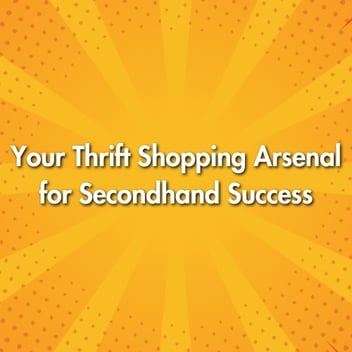Hosting a successful yard sale isn't just about having items to sell—it's about creating an experience that attracts buyers and encourages them to spend. Unfortunately, many well-intentioned sellers inadvertently sabotage their own sales by making common mistakes that send shoppers running to the next sale. If you're planning to host a yard sale, being aware of these major turn-offs can help you avoid them and maximize your profits.
1. Overpriced Items with No Room to Negotiate
2. Disorganized, Cluttered Displays
3. Dirty or Damaged Merchandise
4. Poor Signage and Advertising
1. Overpriced Items with No Room to Negotiate
Nothing sends potential buyers walking faster than unrealistic pricing. Many sellers make the mistake of pricing items based on sentimental value or original cost rather than current market value.
Why it's a problem: Yard sale shoppers are looking for bargains. When they see items priced at 70-80% of retail value, they'll assume you're not serious about selling. Even worse is when sellers refuse to negotiate on these inflated prices.
How to fix it: Research comparable items on Facebook Marketplace or eBay's "sold" listings to get a realistic sense of secondhand values. Price items at 25-30% of retail for good condition items, less for items showing wear. Build a small cushion into your prices to allow for the haggling that shoppers expect. Remember, your goal is to sell, not to store these items another year!
2. Disorganized, Cluttered Displays
The "rummage sale" approach where everything is tossed into boxes or piled on tables forces shoppers to dig through chaos to find treasures—and most won't bother.
Why it's a problem: Disorganization signals that you don't value your items or your customers' time. It also prevents shoppers from seeing what you actually have, leading to missed sales opportunities.
How to fix it: Organize similar items together (kitchen goods, tools, children's clothing by size, etc.). Use tables at comfortable browsing height rather than forcing shoppers to bend down to floor-level boxes. Hang clothing instead of piling it. Create clear pathways between display areas. Think of your yard sale as a pop-up shop, not a junk pile.
3. Dirty or Damaged Merchandise
One of the quickest ways to lose credibility with yard sale shoppers is by offering items that are dirty, stained, broken, or incomplete without acknowledging these issues.
Why it's a problem: Presenting soiled or damaged items suggests you don't respect your customers. It also raises concerns about the condition of your other merchandise, even items in perfect shape.
How to fix it: Clean everything before putting it out for sale. For clothing, this means washing and removing stains and pet hair. For household items, wipe away dust and grime. Test electronic items to ensure they work. For items with minor issues, a discount and honest disclosure ("Works perfectly but has a scratch on the back") allows buyers to make informed decisions.
4. Poor Signage and Advertising
Many yard sales fail before they even begin due to inadequate or confusing signage that prevents shoppers from finding the sale in the first place.
Why it's a problem: Even the most organized, well-priced yard sale won't succeed if nobody knows about it or can find it. Vague directions, tiny text on signs, or incorrect addresses in online listings waste everyone's time.
How to fix it: Create bold, weatherproof signs with large, high-contrast lettering that can be read from a moving car. Include arrows pointing the way, the address, and date. Place signs at major intersections and along logical routes to your home. In online listings, be specific about start times, provide exact addresses, and mention notable categories (tools, baby items, designer clothing) to attract your target audience.
By avoiding these four major turn-offs, you'll create a more professional, shopper-friendly yard sale experience that encourages browsers to become buyers. Remember, the goal is to make it easy and pleasant for people to give you money for items you no longer want. A little extra effort in preparation can translate into significantly higher profits on sale day.





